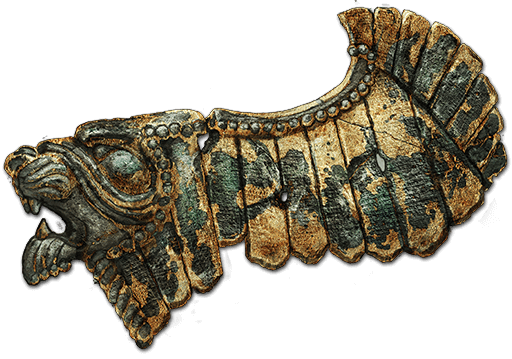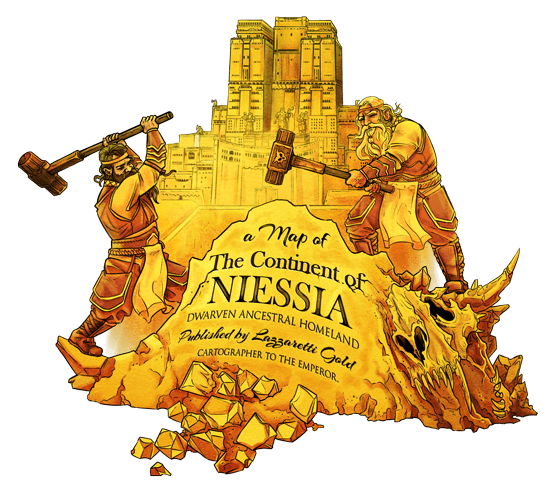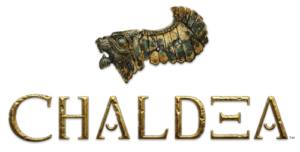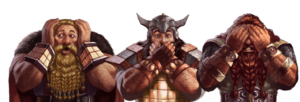T A V J A
 Tavja is an underdeveloped mountain kingdom that spans the southern portion of the Cloudforger Mountains. Tavja is bordered by the Hrimthursar giants of Jotunholm to the north, the Leirjotnar giants to the east, the Andals of Andalusia and the Garnon Forest to the west, Hesse to the southwest, Somacia to the south, and Kinahhu to the southeast.
Tavja is an underdeveloped mountain kingdom that spans the southern portion of the Cloudforger Mountains. Tavja is bordered by the Hrimthursar giants of Jotunholm to the north, the Leirjotnar giants to the east, the Andals of Andalusia and the Garnon Forest to the west, Hesse to the southwest, Somacia to the south, and Kinahhu to the southeast.
Tavja is known for its barbaric practices of slavery, especially of women, and its plundering raids against its neighbors, using its advantage of winged lion mounts to attack from the skies.
Population. The capital city of Tavja is Danorum, a large mountainous fortress that can only be reached by air. Because of the inaccessibility of the city, its population is modest, at around 4,000 people, and is predominantly human. The largest city is Iona, in the northern part of Tavja near the Gurnad Pass, and has a population of about 8,000. Iona is located along the only trade route into Tavja, stretching through the mountains from Andalus to Griotunagardar.
The rest of the Tavjan population is scattered in small settlements of villages and towns, as well as some nomadic tribes.
Government. Tavja is more a loose federation of clans than a proper state. Tribal conflict and civil war are commonplace among the jarls of Tavja. The current ruler under Emperor Kordaava is Kulbrandr, who rules from the capital city of Danorum.
Military. There is no centralized military of Tavja. Instead, each jarl has a personal band of warriors from the local population who have been pressed into service. The pride of the Tavjan military, literally, are winged lions that have been somewhat tamed by Tavjan warriors. These mounted warriors rule the skies of Tavja, armed with bows, spears, and nets for carrying away slaves captured on raids. While few in number, these lions are fierce in combat, for only the strongest warriors can control these powerful beasts.
Most warfare is fought more like raids, gang fights, or running ambushes rather than pitched battles.
Ethnicity. Tavjans are their own human ethnic group, also called Tavjans. They are taller and stronger than what is considered average for humans, as the fierce weather and brutal culture weed out the weak and the frail. Given their long history of enslaving women from neighboring kingdoms, Tavjans possess a number of traits from other human ethnicities and also from giants, dwarves, elves, and ogres. Small traces of other ethnicities are tolerated, but Tavjans are jealous of their version of ethnic “purity”; children who don’t look sufficiently Tavjan are sold into slavery at a young age. Communities of other races are not tolerated inside Tavjan borders.
Economy and Currency. The strongest economy in Tavja is slavery. Slaves are bred, sometimes after being captured illegally, and then exported to other countries that allow it. After slavery, herding, fishing, hunting, trapping, and some limited farming are the primary occupations of Tavjans. There are also a number of lumberjack camps that work the great mountain forests of Tavja. In addition to slaves, Tavjans export lumber, barley, furs, and hides, and they value imports of wax, salt, citrus, spices, wine, and incense. Transactions are generally negotiated at trading houses in the larger towns, sometimes using foreign coins, bullion, or slaves to close the gap in a trade.
Oppression of Women. The plight of women in Tavja is a global concern of the more civilized kingdoms of Chaldea. To maintain Tavja’s male-dominated culture, female offspring are typically sold into slavery at a young age, and the mothers of most children are typically the family’s “first slave,” probably purchased by their father from another clan.
However, there is one path to a limited form of freedom for women who are strong and vicious enough, and that is the path of the shield-maiden. On her 14th birthday, every woman is given the choice of submitting to being considered property or choosing to fight for her freedom against other girls of her age. Girls who win these fights are declared shield-maidens and can serve as warriors for the jarls of Tavja.
Religion. Kordaava has ruled that it is only legal to worship the Ma’at god Set. Until Kordaava conquered Tavja, the Tavjans worshiped the Norse gods. Today, they still do so but in secret.
History
Diaspora. As was typical for most mercenary populations, the end of the Claw-Hammer War resulted in a diaspora of Tavjan people throughout Chaldea. The majority of Tavjans who had survived wars with other humans, orcs, and others came together in the northern Cloudforger Mountains in present-day Jotunholm. Tavjans came to Chaldea with the Hrimthursar giants from the Nine Worlds. According to Tavjan myths, the Hrimthursar were the slaves of Tavjans; according to Hrimthursar myths, however, the Tavjans were the slaves. Either way, the Tavjans and Hrimthursar warred against each other in the aftermath of the Claw-Hammer War, and the Tavjans were ultimately driven south.
Iona. After migrating south, the Tavjans built up a sustainable population and culture in the mountains around Iona. Historians estimate the Tavjans founded Iona around Year –800, making it one of the oldest cities of Chaldea still populated by the people who founded it.
Danorum. It would be many years, however, before the Tavjans gained control of their current capital city of Danorum. Danorum was built during the Claw-Hammer War by Perplexus, an elder dragon who mastered the magic of conjuration. Perplexus dived deep into the mysteries of summoning aberrant beasts from the many planes and dimensions of the Pearl Universe, bringing these beasts to Chaldea to fight the dwarves. Some of these beasts were suitable for excavation, so Perplexus used both them and dwarven prisoners of war to build himself a mountain citadel, big enough to be a worthy aerie for an elder worm and remote enough to be unapproachable on foot.
After the war, Perplexus continued to live in Danorum and rule the surrounding region until his investigations took him away from Chaldea permanently. In his absence, Lamia, herself fleeing the Olympian gods, took over Danorum and ruled it for another century. Lamia’s appetite for human children eventually became so excessive that a Mycenaean heroine came to Danorum and slew her, thereby gaining favor from her goddess, Hera.
Expansion. The death of Lamia left a power vacuum in Danorum. Leaderless, the wild aberrations in the area killed the dwarven prisoners still alive in death camps, preyed upon each other, and were subsequently hunted by Tavjans for sport and profit. The few beasts that escaped the Tavjan hunters fled to dark corners and hidden lairs all across Chaldea.
The greatest of these Tavjan hunters was the legendary Bjorn Lion-Whisperer. Raised in the wilderness by a winged lioness as his mother, Bjorn learned the ways of dominating these ferocious winged lions to use them as mounts. Further, Bjorn had many sons who were also masters at the lion riding, and legends about each of them exist today. Most of the current jarls of Tavja claim one of them as their ancestors, which implausibly makes them all descendants of Bjorn, and thus, the great tradition of Tavjan lion riders was born.
The Tavjan population grew and expanded south until the Tavjans encountered stiff resistance from the Hessens, who had gathered in the southern region of the Cloudforger Mountains.
Tavjan-Hessen Wars. After dominating the mountains from Danorum to Iona, the warlike Tavjans focused their attention to the new Hessen state of Bavarii. Through a series of wars, by around Year –500, the Hessens were driven out of the Cloudforger Mountains into the Gelbe Grasflachen, a vast plain to the southwest.
The Society of War. For the last 500 years, Tavjan society has endured a nearly endless cycle of warfare against neighbors on all sides or internal wars between the various clans. On five occasions, a Tavjan warlord managed to claim the title of Great Jarl and gain control of all of Tavja to bring some stability to the land. But on each occasion, the death of the Great Jarl led to yet another cycle of civil war, as none of these jarl’s sons were strong enough to hold the kingdom together.
Kordavan Empire. When Kordaava conquered Tavja and took Danorum, he enforced a peace among all the Tavjan clans under Jarl Kulbrander, who has ruled Tavja for forty years.
C H A L D E A P E D I A











